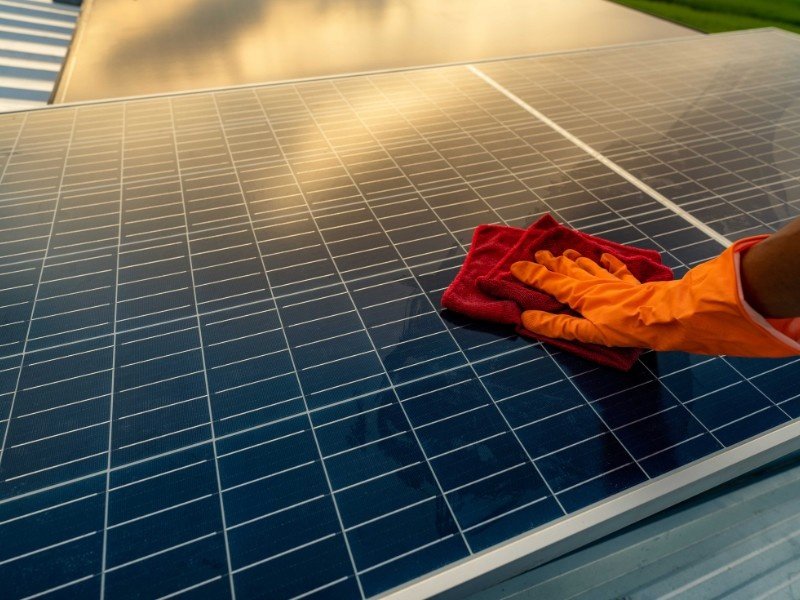Are you thinking about adding solar panels to your roof? Great choice! Solar energy is a smart way to save money on your electricity bills and help the environment. But with so many options out there, how do you know which solar panels are best for your home?
Do not worry, we have got you covered. Here is a simple guide to the top 5 solar panels for your rooftop.
Why and When to Clean Your Solar Panels?
Solar panels convert sunlight into electricity through photovoltaic cells. If these cells are covered with dirt, dust, or debris, the panels’ efficiency will decrease. According to research, dirt and other particles can reduce solar panel efficiency by up to 7%. Regular cleaning ensures maximum sunlight absorption and optimal energy production. Cleaning the panels once or twice a year is a good practice. Factors like your location, weather conditions, and the amount of debris can influence how often cleaning is needed. Here are some indicators that your solar panels need cleaning:
Tools And Materials Needed
To clean the solar panels, you will need the following tools and materials:
Steps To Clean Your Solar Panels
- 1
Ensure all the necessary tools and materials are within reach. Set up your extension ladder securely.
- 2
For your safety and to protect the solar panel system, turn off the power supply before starting the cleaning process.
- 3
Using a garden hose with a spray attachment, rinse off the solar panels and the surrounding roof to remove loose dirt and debris.
- 4
Fill a water sprayer with a cleaning solution (either a commercial cleaner or a homemade mix). Spray a small section of one solar panel with the solution and let it sit for a couple of minutes to break down the grime.
- 5
Use a soft brush or sponge to gently scrub the panel where you applied the cleaning solution. Avoid using abrasive materials to prevent scratching the panels.
- 6
Continue applying the cleaning solution and wiping down the panels in small sections until all the panels are clean.
- 7
Rinse the panels thoroughly with the garden hose to remove any remaining cleaning solution. Use a squeegee attached to an extension pole to remove excess water and dry the panels.
Once the panels are clean and dry, you can turn the solar panel system back on.
Safety Precautions
Cleaning solar panels involves working at heights (as it is kept on roofs), which can be dangerous. Here are some safety tips to follow:


Additional Tips For Cleaning Solar Panels
Half-cut cell panels are a variation of traditional mono or polycrystalline panels. Here is why they are special:
When To Hire Professionals?
While cleaning solar panels is generally a simple task, there are situations where hiring a professional might be your best option. If you are uncomfortable working at heights, have physical limitations, or simply do not have time, consider hiring a professional cleaner. Professional cleaning services can cost around 1,500 to 3,000 rupees, depending on the number of panels and the area you are living in.
Remember to prioritise safety and use the right tools and cleaning solutions to avoid damaging your solar panels. With proper maintenance, your solar panels will continue to serve you well for many years. Happy cleaning!




